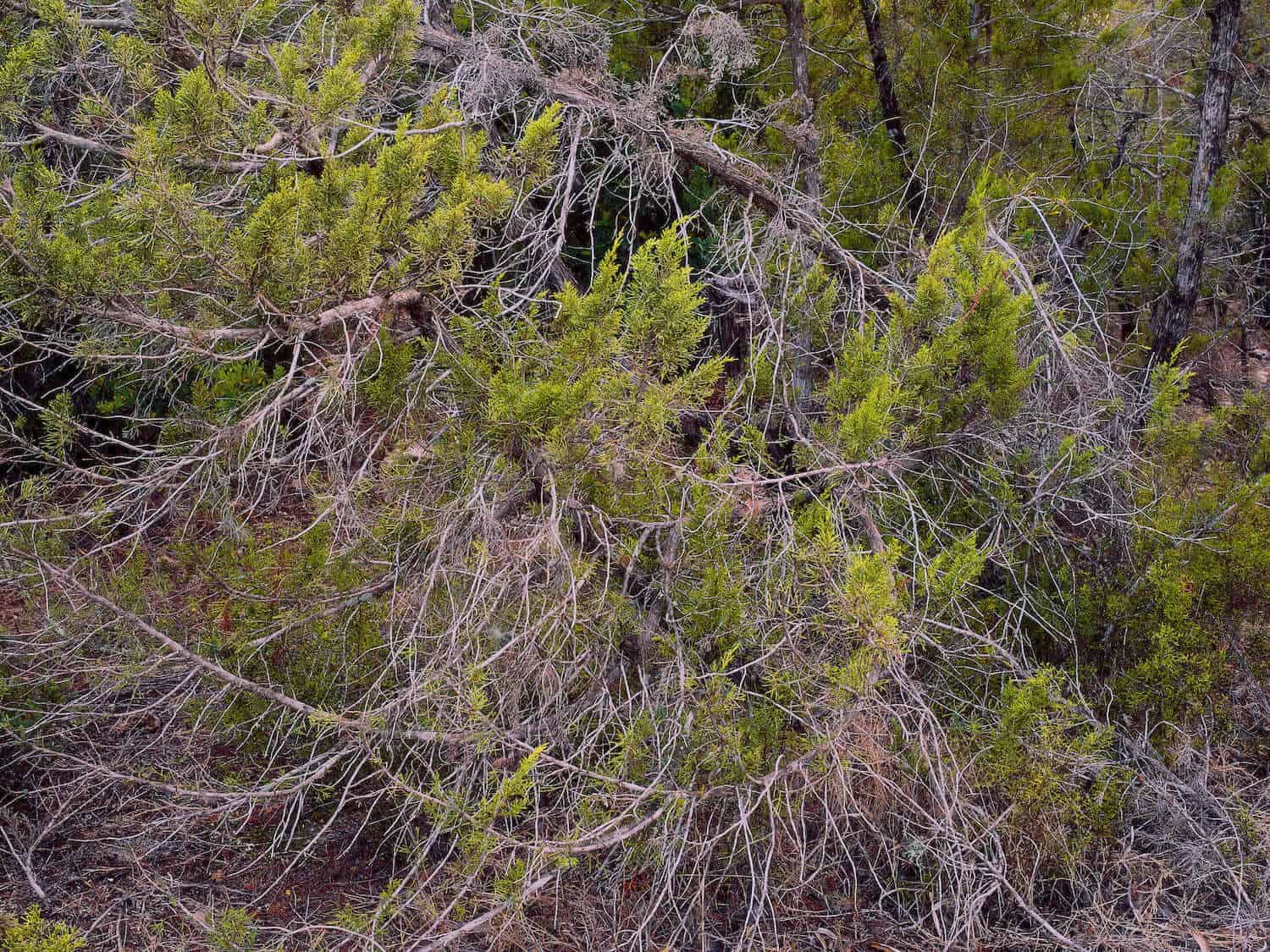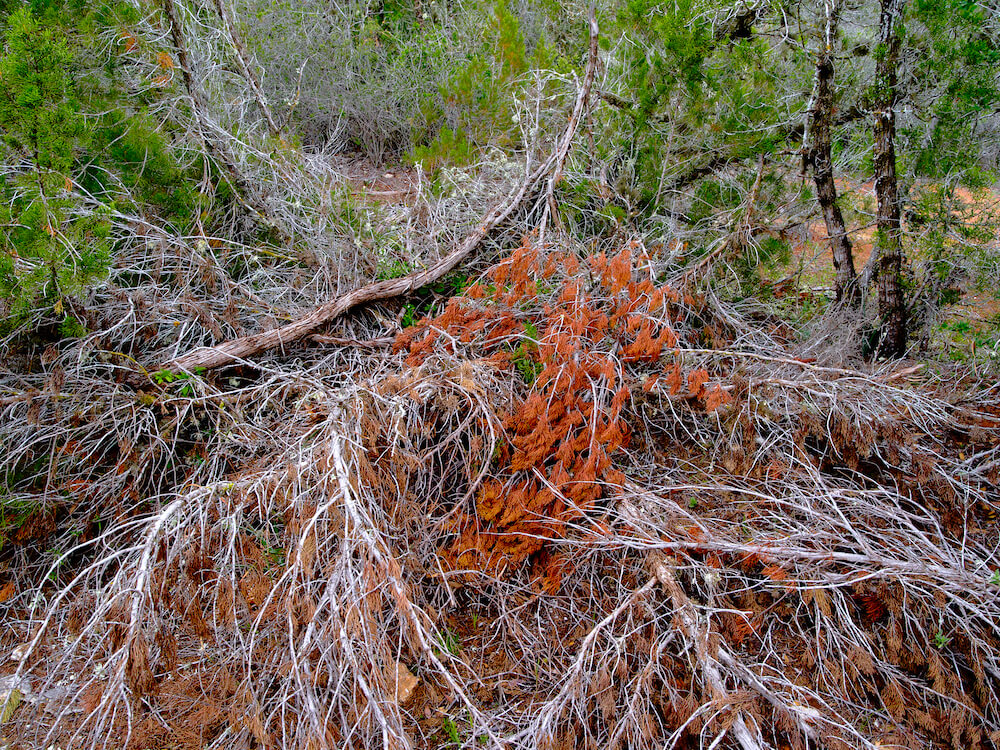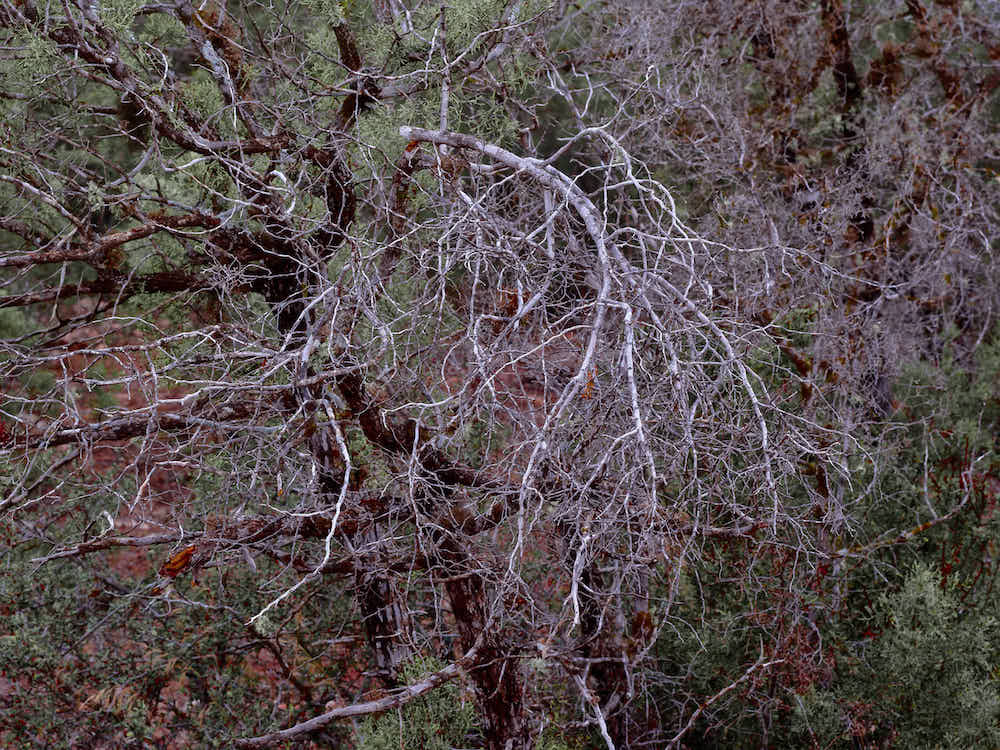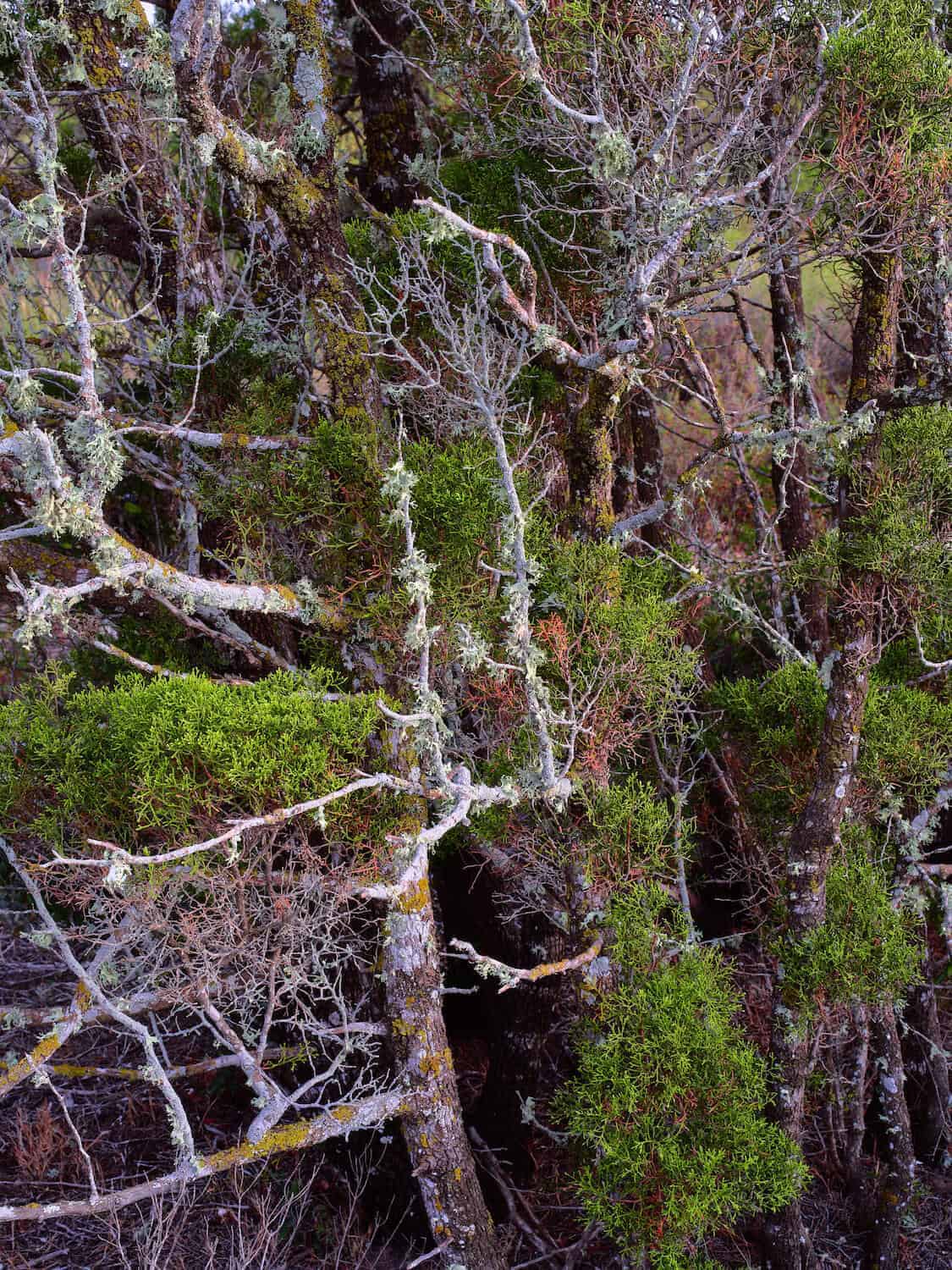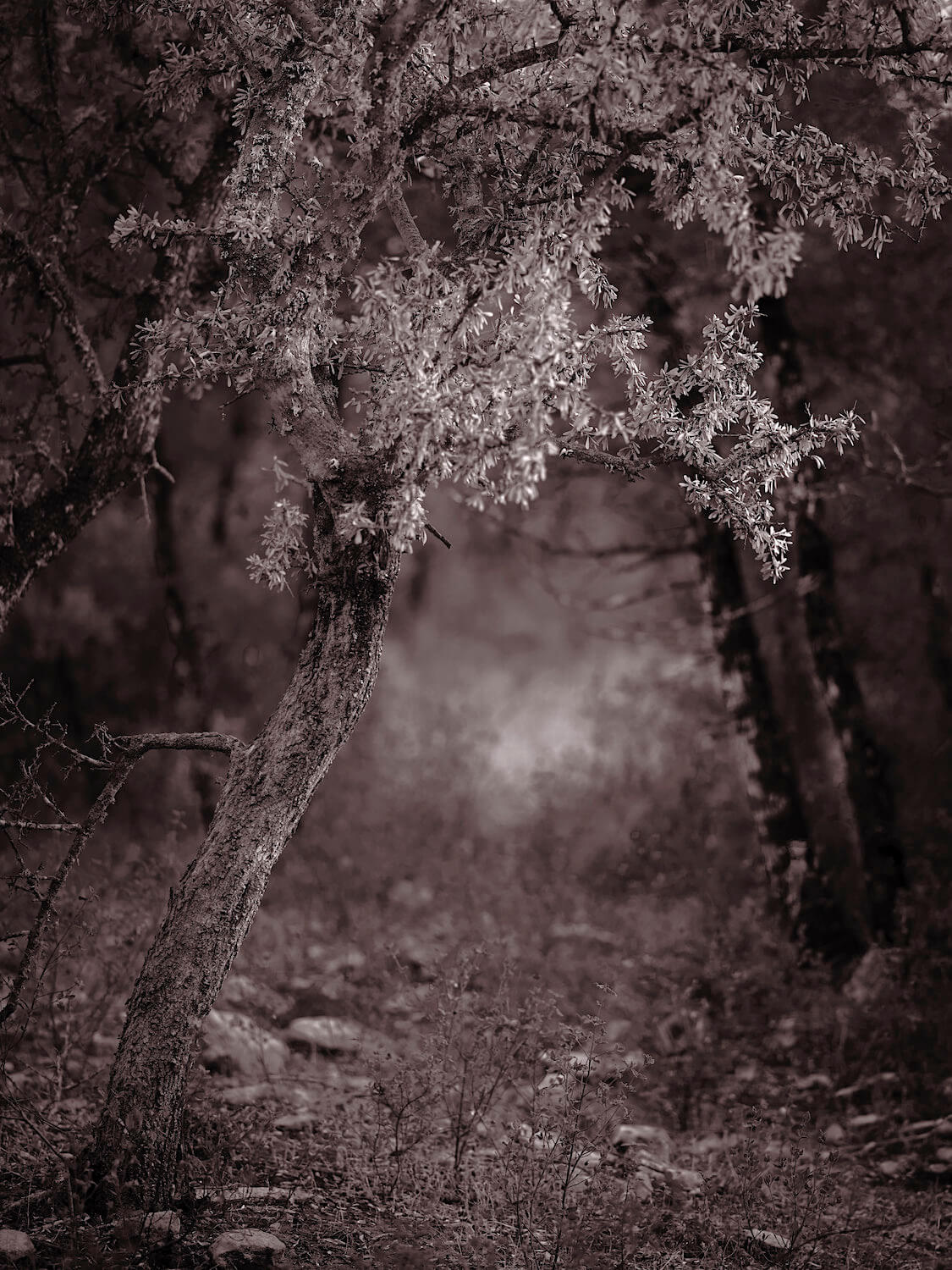The forest adjacent to where I live is mostly underwhelming as forest experiences go. Ubiquitous short thuja trees and rocky underfoot, it is unspectacular to the glancing eye. Even studiously traversing it during the course of a sunny day will reveal very little in the way of inspiring imagery. Whilst grade A difficult for making landscape pictures, its doorstep location does however require almost no pre-planning for all times of the day which opens up photographic possibilities. Intimate landscapes, in particular, require more creative thinking from the photographer. It goes without saying that the smaller the area, the less chance there is of a brilliant view. This should be viewed as an opportunity to develop yourself.
ADDING CONCEPT TO LANDSCAPE PICTURES
Intimate landscapes benefit from a more considered approach.
Find a location you can re-visit over the years, then reflect on your developing photographic approach.
For example, in 2016 I found the shapes of wind-affected forest branches and mossy fauna to be strange and fascinating. I zeroed in on details of flowing shapes and structure, avoiding wide viewpoints. Initially, I walked around open to possibilities. Let your mind be responsive to what catches your eye. Once you have found a potential image of interest, ascertain what exactly you want to reveal about it. Reflect on it back at home and then on your next walk, look for details and natural compositions which work similarly. I photographed in the last hour of daylight and shot mostly at a 90-degree angle from the sun, using a narrow aperture to maintain sharpness throughout. I kept to these self-imposed constraints for the next few months until I felt I had explored or indeed exhausted this way of seeing.
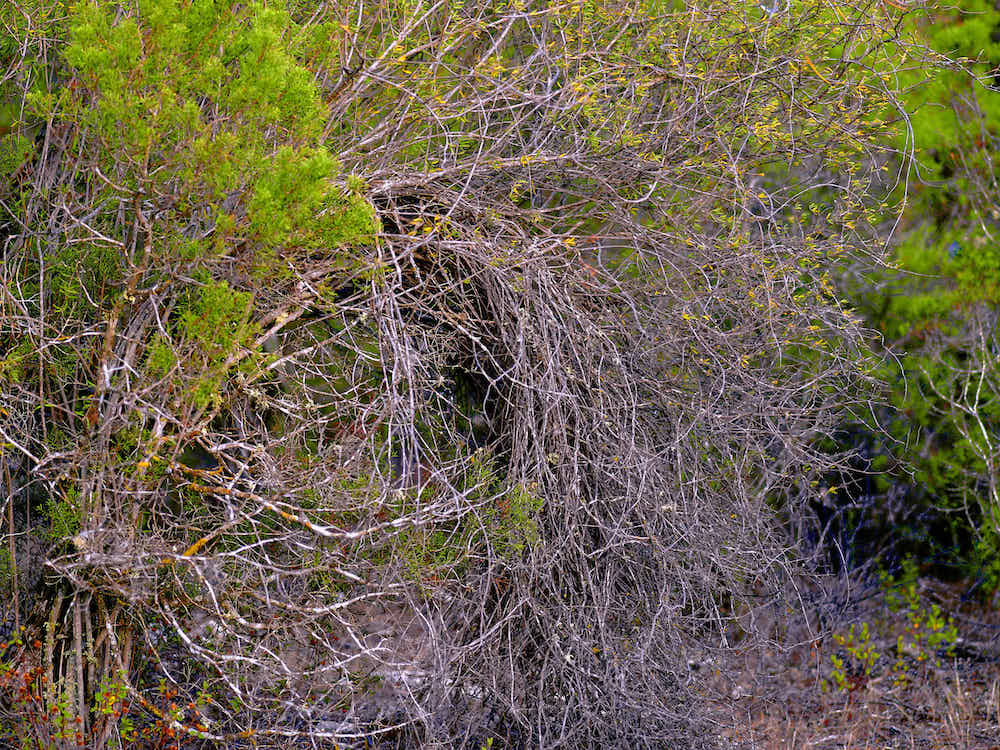
Use just two focal lengths to develop a consistent perspective.
This maxim works to encourage your understanding of two photographic perspectives and with telephoto choices, more intimate views, as opposed to looking at the wider possibilities of the location. You can save that for later. I find having just two prime lenses means I’m not looking at all possibilities. You might apply a multi-focal length strategy on a two-week foreign trip, but locally you can afford to pace it. Restricting your focal length range will also mean you get to know the chosen focal lengths really well, reducing the tendency with zoom lenses to only use the extreme ends. By choosing midway settings you’ll encourage understanding of the subtle changes to perspective when you barrel up and down. Primarily I use telephotos to compress space first and foremost, and less so because of physical proximity and the need to get in closer. Compressing allows the rear subjects to come into the scene and can be especially useful in dune locations where a 400mm can isolate minimalist form.
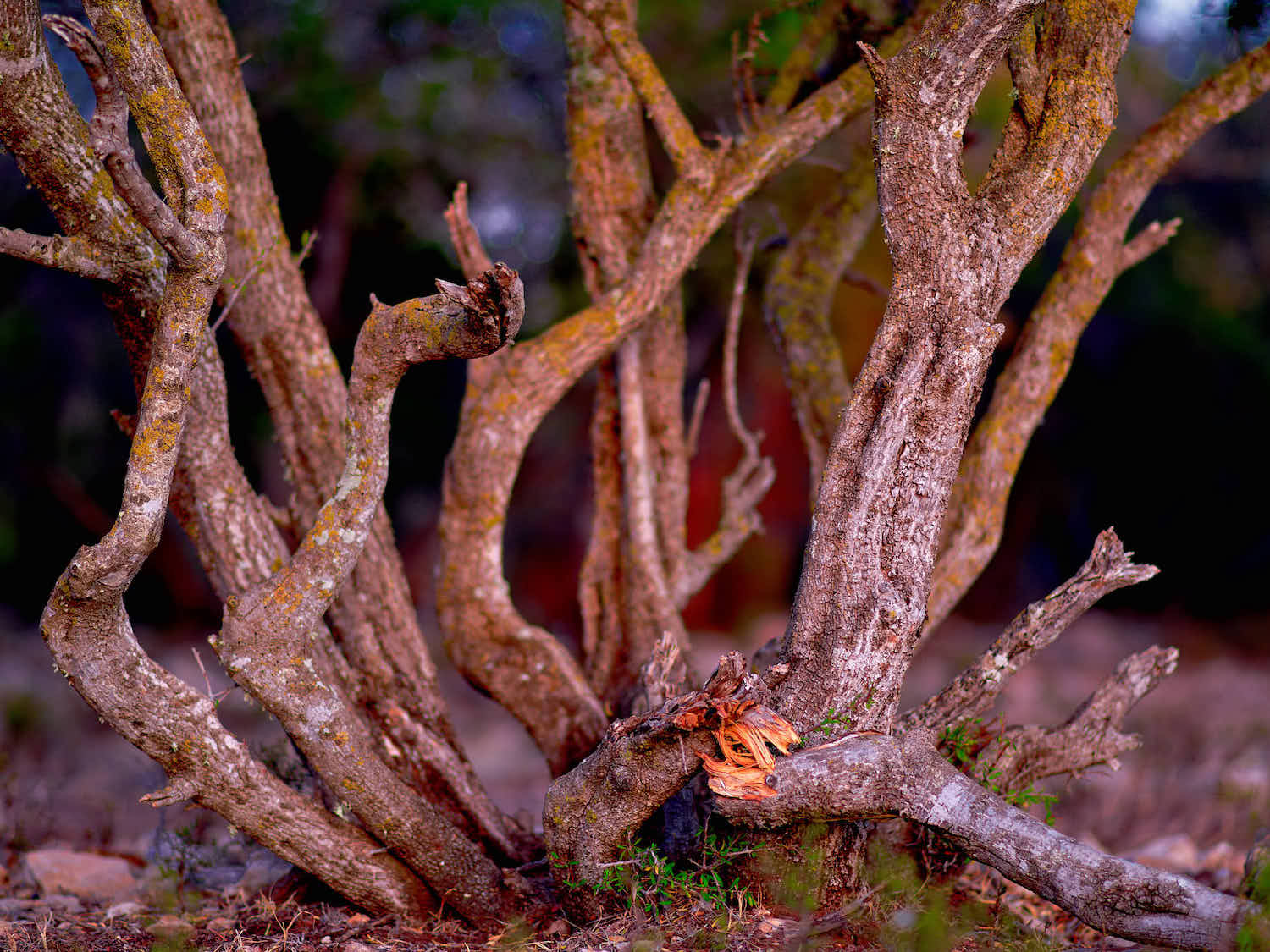
Allow time to pass before returning with your camera.
You can now spend time processing and sequencing your landscape pictures, enjoying the location at an abstracted distance. By all means, head back there, but enjoy the place as a visit and switch off. The gaps between my three forest projects were eighteen months each.
By autumn 2018 I decided to consciously begin looking for new landscape pictures, specifically prompted by looking at b&w photography and Rob Hudson’s photos. With this in mind, I evaluated the need for tonal range and identified seasonal changes in foliage which offer some variation in greens. It was again one initial photograph that led the way; the idea of looking through and beyond, with the main subject being at the back of the scene.
The image reminded me of childhood cartoons and stories in which wood trails and paths shield a distant point. This became my template; ‘the enchanted forest’. The next 6 weeks produced 10 images I was content with. By then the lighter leaves had fallen and I had exhausted the possibilities. Once again I had explored a small area no greater than one square kilometre, in over 50 outings. All the images used f2.8 on the one focal length. In two projects I’d completely switched my DOF approach and my medium.
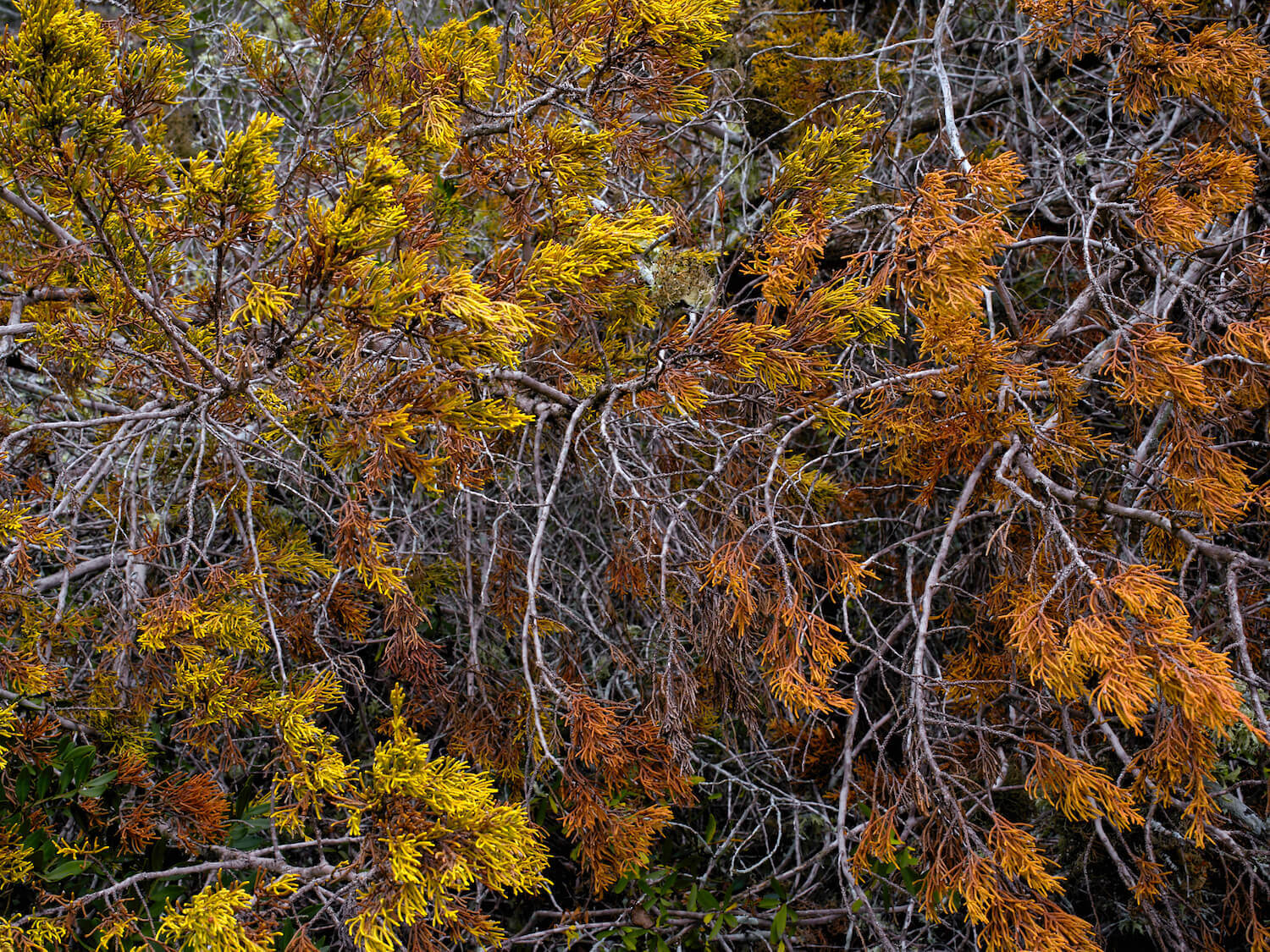
Finding meaning in your landscape pictures.
By relating a way of seeing to memories, even culturally constructed ones, I had made the work more personal and by doing so allowed the possibility for shared meaning. The more personal you make your work, the more likely that it will strike a chord with an audience although that audience may be smaller in number.
In March 2020 due to the Covid 19 lockdown, I was back in the forest, this time just after some rare rainfall. Now a different forest revealed itself, and with no expectations, I looked for anything that caught my eye. A patch of ground with newly cut trees and branches revealed bark and green foliage saturated with rain and of course deeper colours. The scene overall held just two main colours.
This led me to explore another part of the forest where an old river bed provided a trail and tree species ideal for firewood. Over the next six weeks, this sandy ground location was the setting for creatively recording the combination of browning foliage set against the green forest backdrop. Cloudy days were used to reduce contrast and I shot with both vertical and landscape framing again using just two lenses, a wide-angle (28mm) and a standard (43mm). I kept my aperture at around f16.
Similarly to the ‘enchanted forest’, I made associations beyond the literal. This time it wasn’t an overall link but instead, individual framed scenes jumped out to me. A Gustav Klimt look, star clusters, a river flow or choppy sea waves. Through careful framing, I was able to draw the viewer to these associations. Not all the images I made prompted connections on location, most did not and it’s not assured that viewers will read them in the same way, but it’s likely that many will or find other associations.
Being aware of how your images can work beyond the literal, however well rendered it is, is where most photographers want to be. Landscape photography is perhaps one of the most difficult areas to encourage this in but it’s possible.
Project 1 – 120mm (full frame). f16. late sun/fading light, framing vertical + landscape.
Project 2 – 120mm (full frame). f2.8 late sun/fading light, framing vertical.
Project 3 – 28mm + 43mm (full frame). f16 cloud and post rain, framing vertical + landscape.
Across the three projects, I had produced three distinct aesthetics, stretching me creatively and also allowing me to use different camera settings. Perhaps one hundred and fifty visits had rewarded a selection of 40 images.
Having a local venture sometimes meant after some sessions I’d arrive home without having turned my camera on. Less pressure to make images can mean a more discerning eye.

